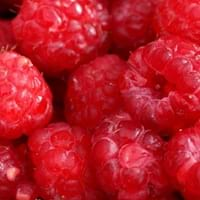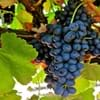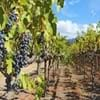Life Span
Perennial
Perennial
Type
Fruit
Flowering Plants
Origin
Not Available
Asia, Europe
Types
PRIMOCANE RED RASPBERRIES ,FLORICANE RED RASPBERRIES
American Lily of the Valley, European Lily of the Valley, Japanese Lily of the valley.
Number of Varieties
Not Available
Habitat
Forests, Mountains, Tree canopies
Banks, Broad-Leaved Forests, coppices, Dry and Young forest Heaths, Forest margins, Ridges, Rocky Ridges
USDA Hardiness Zone
4-8
4-8
Sunset Zone
A1, A2, A3, 1a, 1b, 2a, 2b, 3a, 3b, 4, 5, 6, 7, 8, 9, 10, 11, 12, 13, 14, 15, 16, 17, 18, 19, 20, 21, 22, 23, 24
A1, A2, A3, H1, H2, 1a, 1b, 2a, 2b, 3a, 3b, 4, 5, 6, 7, 14, 15, 16, 17, 18, 19, 20
Habit
Upright/Erect
Mat-forming
Flower Color
White
Pink, White
Flower Color Modifier
Bicolor
Not Available
Fruit Color
Red
Not Available
Leaf Color in Spring
Green
Dark Green
Leaf Color in Summer
Green
Dark Green, Green
Leaf Color in Fall
Green
Green, Yellow green
Leaf Color in Winter
Light Green
Not Available
Leaf Shape
Toothed
Bell Shaped
Plant Season
Spring, Summer, Fall
Fall, Spring, Summer
Sunlight
Full Sun, Partial Sun
Part sun, Partial shade
Type of Soil
Loam, Sand
Moist, Well drained
The pH of Soil
Acidic, Neutral
Acidic, Neutral
Soil Drainage
Well drained
Not Available
Bloom Time
Spring, Summer
Late Spring, Spring
Tolerances
Drought
Not Available
Where to Plant?
Container, Ground, Pot
Container, Ground, Pot
How to Plant?
Suckers
From Rhizomes, Seedlings
Plant Maintenance
Medium
Medium
Watering Requirements
Average Water Needs
Keep the ground moist but not water-logged, Requires a lot of watering, Water twice a day in the initial period, Water when soil is dry
In Summer
Lots of watering
Lots of watering
In Spring
Moderate
Moderate
In Winter
Average Water
Average Water
Soil pH
Acidic, Neutral
Acidic, Neutral
Soil Type
Loam, Sand
Moist, Well drained
Soil Drainage Capacity
Well drained
Not Available
Sun Exposure
Full Sun, Partial Sun
Part sun, Partial shade
Pruning
Remove damaged leaves, Remove dead branches, Remove dead leaves
Do not prune during shooting season, Prune after harvesting, Prune in late summer or fall, Prune to stimulate growth, Remove deadheads
Fertilizers
All-Purpose Liquid Fertilizer
All-Purpose Liquid Fertilizer
Pests and Diseases
Red blotch
Anthracnose, Aureobasidium leaf spot, Foliar nematode, Leaf spot, Mealybugs, Rust, Southern blight
Plant Tolerance
Drought
Drought
Flowers
Insignificant
Yes
Flower Petal Number
Single
Not Available
Edible Fruit
Yes
Not Available
Fragrant Fruit
Yes
Not Available
Fragrant Leaf
No
Not Available
Foliage Texture
Medium
Coarse
Foliage Sheen
Matte
Not Available
Self-Sowing
No
Not Available
Attracts
Birds, Butterflies
Bees
Allergy
Abdominal pain, breathing problems, Diarrhea, Eczema, Fainting, Itchiness, Nausea, Vomiting, wheezing
Headache, Nausea, Vomiting
Aesthetic Uses
bank hedging, Cottage Garden, Slopes hedging
Beautification, Showy Purposes
Beauty Benefits
Not Available
Not Available
Environmental Uses
Air purification
Air purification
Medicinal Uses
anti-inflammatory, Anti-oxidant, Cancer, Improve heart health, Liver Protection, Skin Whitening and Pigmentation Medicine, Weight loss
Chest pain, Swelling
Part of Plant Used
Fruits, Leaves, Root
Flowers, Leaves, Root
Other Uses
Jam, Jelly, Used As Food, Used for its medicinal properties
Air freshner, Cosmetics, Oil is used for aromatherapy, Oil is used in perfume, soaps, creams, etc., Showy Purposes, Used As Food, Used as Ornamental plant, Used for fragrance
Used As Indoor Plant
No
Yes
Used As Outdoor Plant
Yes
Yes
Garden Design
Edible, Fruit / Fruit Tree, Hedges
Bedding Plant, Bog Garden, Cutflower, Edging, Foundation, Mixed Border
Botanical Name
RUBUS 'Autumn Bliss'
Convallaria majalis
Common Name
Red Raspberry
Lily of the Valley
In Hindi
रूबस idaeus
कामुदिनी
In German
Himbeere
Maiglöckchen
In French
Rubus idaeus
Lily of the Valley
In Spanish
Rubus idaeus
Lirio de los valles
In Greek
σμέουρο
Κρίνος της κοιλάδας
In Portuguese
Rubus idaeus
Lírio do Vale
In Polish
Rubusidaeus
Lilia doliny
In Latin
Rubus idaeus
Lílium convállium
Phylum
Magnoliophyta
Tracheophyta
Class
Magnoliopsida
Magnoliopsida
Order
Rosales
Asparagales
Family
Rosaceae
Asparagaceae
Clade
Angiosperms, Eudicots, Rosids
Angiosperms, Monocots
Tribe
Rubeae
Not Available
Subfamily
Rosoideae
Nolinoideae
Number of Species
Not Available
Not Available
Importance of Red Raspberry and Lily of the Valley
Want to have the most appropriate plant for your garden? You might want to know the importance of Red Raspberry and Lily of the Valley. Basically, these two plants vary in many aspects. Compare Red Raspberry and Lily of the Valley as they differ in many characteristics such as their life, care, benefits, facts, etc. Every gardener must at least have the slightest clue about the plants he wants to plant in his garden. Compare their benefits, which differ in many ways like facts and uses. The medicinal use of Red Raspberry is anti-inflammatory, Anti-oxidant, Cancer, Improve heart health, Liver Protection, Skin Whitening and Pigmentation Medicine and Weight loss whereas of Lily of the Valley is Chest pain and Swelling. Red Raspberry has beauty benefits as follows: Not Available while Lily of the Valley has beauty benefits as follows: Not Available.
Compare Facts of Red Raspberry vs Lily of the Valley
How to choose the best garden plant for your garden depending upon its facts? Here garden plant comparison will help you to solve this query. Compare the facts of Red Raspberry vs Lily of the Valley and know which one to choose. As garden plants have benefits and other uses, allergy is also a major drawback of plants for some people. Allergic reactions of Red Raspberry are Abdominal pain, breathing problems, Diarrhea, Eczema, Fainting, Itchiness, Nausea, Vomiting and wheezing whereas of Lily of the Valley have Headache, Nausea and Vomiting respectively. Having a fruit bearing plant in your garden can be a plus point of your garden. Red Raspberry has showy fruits and Lily of the Valley has showy fruits. Also Red Raspberry is not flowering and Lily of the Valley is flowering. You can compare Red Raspberry and Lily of the Valley facts and facts of other plants too.





